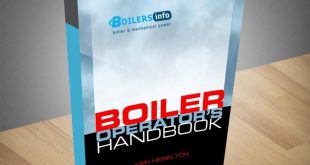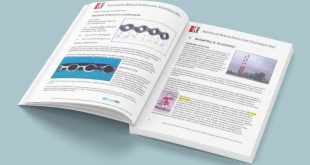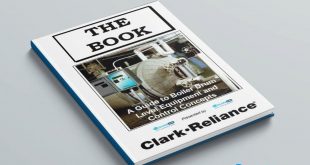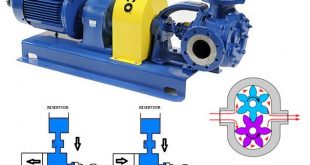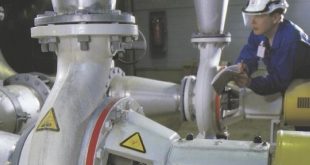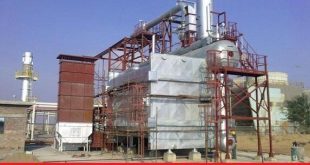Boiler Operators Guide Fourth edition by Anthony Lawrence Kohan. Heating, industrial process, institutional, and utility boiler plant operation continues to be affected by developments in electronic instrumentation and controls, which in turn produce more automatic operation. Regulatory requirements for controlling emissions and discharges are also affecting modern operations. This edition describes these modern developments. Book continue to stress fundamental basic …
Read More »Boiler Operator Exam Preparation Guide pdf
Boiler operator exam preparation guide pdf by Theodore B. Sauselein is designed for BOE Boiler engineering examination. Book is Easy to understand it Reviews all exam topics. 457 multiple-choice, essay and number problems with detailed solutions are included. Covers the whole process from heat theory to practical operations of fire tube and water tube boilers. Topics of Boiler operator exam preparation …
Read More »Boiler Operator Handbook
Boiler Operator Handbook is written for the boiler operator, an operating engineer or stationary engineer by title, who has knowledge and experience with operating boilers but would like to know more and be able to operate his plant wisely. It is also simple enough to help a beginning boiler operator learn the tricks of the trade by reading the book instead …
Read More »Advanced Boiler Inspection Techniques
Advanced Boiler Inspection Techniques by UDC describes the Reliability & Availability of low and high-pressure boilers inspection. importance of boiler inspection. Risk management and Proper Failure analysis of boilers. Equipment required for in-plant boiler inspection teams. as well as Outage management Boiler Tube Repair and Replacement. The Contents of Advanced Boiler Inspection Techniques Reliability & Availability Risk management Human Resources Boiler …
Read More »Boiler Drum Level Control
Boiler Drum Level Control A guide to boiler drum level equipment and control concepts. The Boiler engineer must be ever vigilant to ensure the integrity of the equipment and designs he employs when dealing with critical process applications”. This caution was given by the promoter of a new program for testing control systems. Since there was no “Cookbook” of designs …
Read More »Boiler Control System Engineering
Boiler Control System Engineering introduction Boilers are a key power source for electrical generation in the United States and around the world and for providing heat in process industries and buildings. Regardless of the capacity or fuel, there are certain fundamental control systems required for the boiler control. Large utility systems are more complex due to the number of burners …
Read More »Demonstration of Advanced Boiler Instrumentation Technologies
Demonstration of Advanced Boiler Instrumentation Technologies Technical Report by EPRI includes New and increasing limits on emissions (in particular, NOx) and the new emphasis on heat rate have underscored the need to measure flue gas constituents more accurately and in more locations. Utilities are making large capital investments in boiler improvements and emission control devices. These investments can be enhanced …
Read More »Basic Concepts of a Boiler
Boiler Training slides /presentation Includes: Basic Concepts of a Boiler Boiler definitions “BOILER” means any closed vessel exceeding 22.75 liters in capacity and is used expressively for generating steam under pressure and includes any mounting or other fitting attached to such vessel which is wholly or partly under pressure when the steam is shut off. Download Zip File from Link …
Read More »Positive Displacement Pumps types and operation
Positive displacement pumps operate on a different principle than centrifugal pumps. Positive displacement pumps physically entrap a quantity of liquid at the suction of the pump and push that quantity out the discharge of the pump. A positive displacement pump is one in which a definite volume of liquid is delivered for each cycle of pump operation. This volume is …
Read More »Soot Blower in Boiler Fixed & Rotary Soot Blowers
Large Boilers in power plants are fitted with soot blowers, which are tools to keep the outside surface of the tubes clean and free from material or ash that would have a detrimental effect on the heat transfer surface. The blowing fluid is generally steam and the frequency of operation depends upon the type of fuel being used. The flue …
Read More »Centrifugal Pump Operation
Improper operation of centrifugal pumps can result in damage to the pump and loss of function of the system that the pump is installed in. It is helpful to know what conditions can lead to pump damage to allow better understanding of pump operating procedures and how the procedures aid the operator in avoiding pump damage. Many centrifugal pumps are …
Read More »Boiler Preservation Methods Dry and Wet
Boiler preservation is required when boiler is out of service or in shutdown condition for a long period to protect boilers internal surface from corrosion and atmospheric oxygen. There are two types of boiler preservation methods each of them is used in specific conditions. Wet preservation of boiler Dry preservation of boiler Boiler preservation through nitrogen method is also used …
Read More » Boilersinfo Boiler and Mechanical Power Digital Library
Boilersinfo Boiler and Mechanical Power Digital Library


